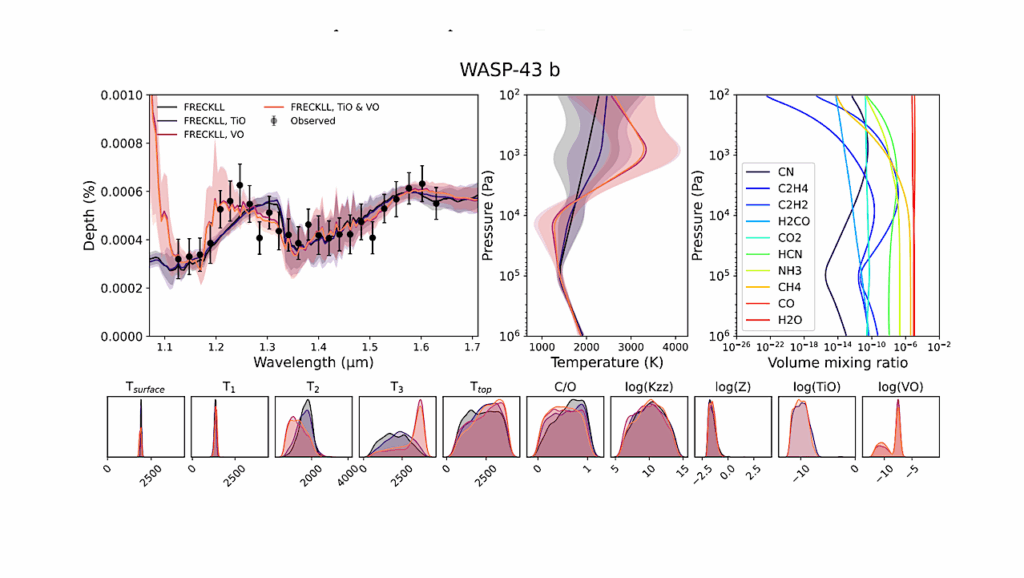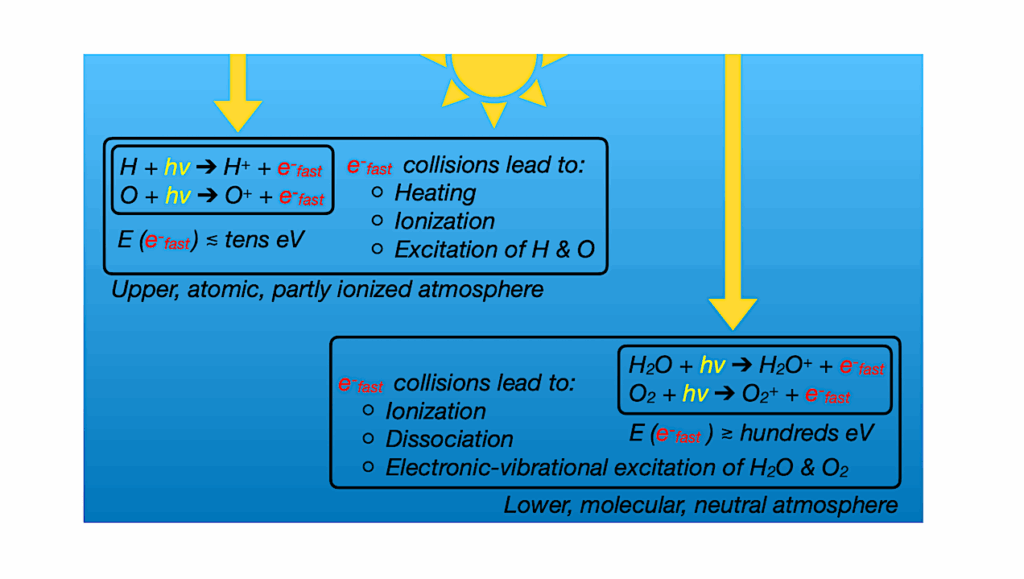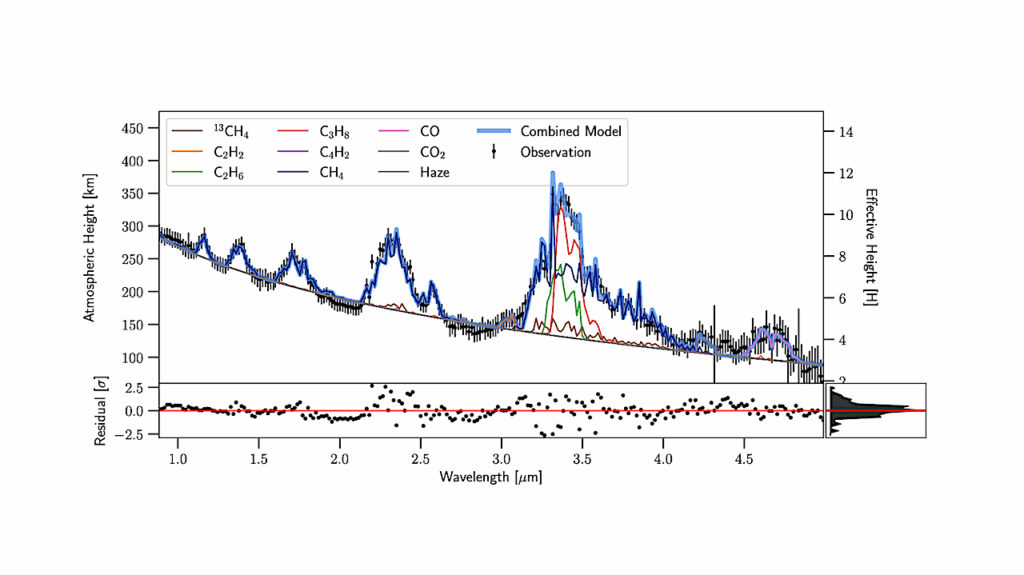A Formation Pathway For Terrestrial Planets With Moderate Water Content Involving Atmospheric-volatile Recycling

Of the many recently discovered terrestrial exoplanets, some are expected to harbor moderate water mass fractions of a few percent. The formation pathways that can produce planets with these water mass fractions are not fully understood.
Here, we use the code chemcomp, which consists of a semi-analytical 1D protoplanetary disk model harboring a migrating and accreting planet, to model the growth and composition of planets with moderate water mass fractions by pebble accretion in a protoplanetary disk around a TRAPPIST-1 analog star.
This star is accompanied by seven terrestrial planets, of which the outer four planets likely contain water mass fractions of between 1% and 10%. We adopt a published model that considers the evaporation of pebbles in the planetary envelope, from where recycling flows can transport the volatile vapor back into the disk. We find that with this model, the planetary water content depends on the influx rate of pebbles onto the planet.
A decreasing pebble influx with time reduces the envelope temperature and consequently allows the formation of planets with moderate water mass fractions as inferred for the outer TRAPPIST-1 planets for a number of different simulation configurations. This is further evidence that the recycling of vapor is an important component of planet formation needed to explain the vast and diverse population of exoplanets.

Final planetary water mass fraction versus initial local disk temperature at the position of the planet as a proxy for the distance from the star. Planets that are not shown in the plot have lower water mass fractions than 10−5 . The columns correspond to different values of the α-viscosity, the rows show different solid fragmentation velocity values. Each marker corresponds to one planet starting at a specific disk temperature. The color of the markers indicates the final mass of the planet (see color-bars on the right). The shape of the markers specifies the initial mass of the disk in which the planet grows (see legend). The hatched regions in the background correspond to the 1σ-regions of the water mass fractions of the TRAPPIST-1 planets estimated by Raymond et al. (2022) using their model ii and are color-coded according to the observed masses of the TRAPPIST-1 planets using the same color-bar. The vertical lines indicate the location of the water-evaporation front. We use our full model, which consists of both the Brouwers opacity model (vlim = 30.0 m s−1 , F = 0.0) and the Birnstiel pebble drift, while applying the planetary envelope model described above. In addition, we account for the planetary migration and the evaporation of pebbles in the disk as they drift inwards. — astro-ph.EP
Jonas Müller, Bertram Bitsch, Aaron David Schneider
Comments: Accepted by A&A, 19 pages, 8 figures
Subjects: Earth and Planetary Astrophysics (astro-ph.EP)
Cite as: arXiv:2406.09186 [astro-ph.EP] (or arXiv:2406.09186v1 [astro-ph.EP] for this version)
Submission history
From: Jonas Müller
[v1] Thu, 13 Jun 2024 14:48:10 UTC (373 KB)
https://arxiv.org/abs/2406.09186
Astrobiology








